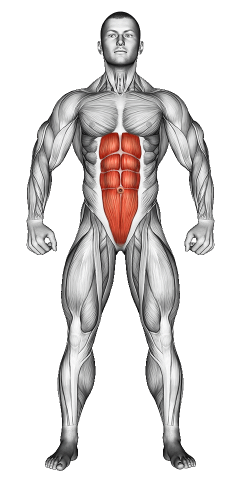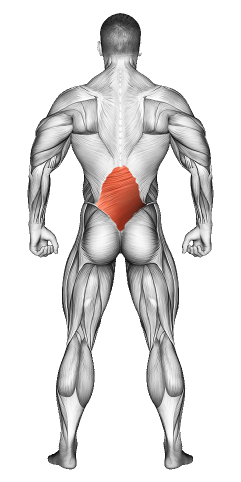Dead Bug Stretch: Video Tutorial & Stretch Guide

Written By: Claude Michael
Updated: Nov 3, 2024
| Workout | Dead Bug Stretch |
| Primary Muscle Group | Abs |
| Secondary Muscle Group | Lower Back |
| Equipment Required | Mat |
| Force Type | Bodyweight |
| Mechanics | Isolation |
| Exercise Type | Core Stability |
| Difficulty | Beginner |
Dead Bug: Video Tutorial & Stretch Guide
Secondary Muscles Group
Dead Bug: Step-by-Step Guide
- Step 1: Lie down on your back on a mat. Bring your arms straight up toward the ceiling, right above your shoulders, and lift your legs with your knees bent at a 90-degree angle, directly over your hips. This position sets your core up to work as we go through each movement.
- Step 2: Press your lower back down against the mat. Imagine pulling your belly button toward your spine. This position keeps your core tight and ensures that your lower back stays safe. Take a moment here to feel your core muscles engage.
- Step 3: Start with your right arm and left leg. Slowly extend your right arm back over your head and reach your left leg toward the floor. Move both in a controlled way, keeping your core tight and your lower back pressed down. Focus on staying steady, avoiding any twisting or shifting.
- Step 4: Bring your right arm and left leg back to the starting position with control, keeping your movements smooth and steady. Avoid letting your back lift off the mat as you come back up.
- Step 5: Now repeat with your left arm and right leg. Extend slowly and smoothly, then return to the start. Keep alternating sides in a rhythm, focusing on each move to keep your core engaged and stable.
- Step 6: Don’t rush this exercise—let’s focus on control. Slow, steady movements let you engage your core deeply, giving you the most benefit. Take each rep seriously to strengthen your stability and control.
Dead Bug: Overview
The Dead Bug Stretch trains your core, strengthens your lower back, and improves overall stability. This move requires both sides of your core to work independently, which enhances coordination and balance. Perfect for beginners, it gives your core an intense workout while protecting your spine. You’ll feel more stability in your everyday movements, too, as you practice this exercise regularly.
Dead Bug: Benefits
The Dead Bug Stretch does more than just work your core; it helps you build real strength and stability. This move trains your core muscles, stabilizes your lower back, and improves balance. By consistently practicing this exercise, you reduce injury risk, protect your spine, and build a foundation for better control in every workout.
Dead Bug: Pro Tips & Advanced Techniques
- Focus on Lower Back Positioning: Keep your lower back flat against the mat the entire time. This keeps your core activated and protects your spine.
- Slow It Down: Don’t rush. The slower you go, the more control you gain. Each rep matters—use this focus to feel your core working.
- Challenge with a Stability Ball: For an extra challenge, hold a stability ball between your knees and hands as you alternate sides. This adds resistance, making your core work harder.
- Breathe with Purpose: Inhale as you extend, exhale as you return. Deep breaths help you stay controlled and steady, keeping you focused on your core.
Dead Bug: Progression Plan
Beginner
Intermediate
Advanced
Dead Bug: Frequently Asked Questions (FAQs)
What muscles does the Dead Bug Stretch work?
+This exercise focuses on the core, targeting the abs, lower back, and hip flexors.
Can I add the Dead Bug Stretch to any workout?
+Absolutely! It’s a versatile addition to any core workout, warm-up, or cool-down routine. Use it to strengthen your core or to prep for more intense exercises.
How often should I do the Dead Bug Stretch?
+Add it to your routine 2-3 times a week, especially on days when you’re focusing on core strength.
What mistakes should I avoid?
+Don’t let your lower back lift off the mat. Keep your core engaged, avoid rushing, and control each movement to get the full benefit.
Share
Don’t Wish for It, Work for It – Join the FlexXP Newsletter Today!
Thank you for signing up for the FlexXP Newsletter!
This site is protected and the Google Privacy Policy and Terms of Service apply.

